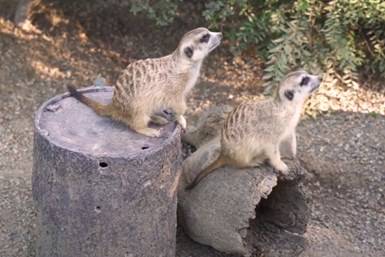3D Printing for Animal Enrichment: The Cool Parts Show Goes to the Zoo
It's not just humans who can benefit from the design advantages of additive manufacturing. A 3D printed device made by GE Additive is enriching the lives of animals at the Cincinnati Zoo.
Share







Autodesk, Inc.
Featured Content
View More


How do you keep animals in zoos engaged, active and mentally challenged?
One way is to change how the animals are fed. As anyone with a pet at home knows, it is all too easy for an animal to fall into a routine, to expect food at a specific time and delivered in a specific way. Zoo animals fed like pets are liable to lose their natural instincts to forage and hunt for their meals. Finding innovative ways of feeding animals can keep them from becoming bored, and allow them to exercise their mental and physical abilities while getting nutrients at the same time.
At the Cincinnati Zoo and Botanical Garden, an animal enrichment team is tasked with creating feeding devices to keep their charges both fed and engaged. Solutions are created by hand with the help of volunteers, often from wood, PVC pipe, recycled materials or papier-mâché. But recently, the enrichment team got assistance from another local organization with experience in advanced, digital manufacturing: GE Additive.
AddWorks, a consulting arm within GE Additive, worked with the zoo team to develop a feeding device that dispenses crickets slowly into an enclosure, encouraging the animal(s) nearby to watch, listen, stalk and capture these insects. Using this device, keepers can feed animals over a longer period of time without being directly involved, allowing for a more natural and engaging experience for their charges.


Looks can be deceiving. Above, a Cincinnati Zoo meerkat stands on top of the final 3D printed feeder which has a natural appearance to mimic a tree trunk. Below, a CAD image from GE Additive shows the complex passageways the camouflaged device contains.
It might seem odd for an additive manufacturer known for its 3D printed fuel nozzle and other aerospace applications to be making feeding devices for zoo animals. But as The Cool Parts Show co-host Peter Zelinski and I learned, this feeder has more in common with industrial parts than might be immediately obvious. The metal 3D printed device GE’s AddWorks created resembles a tree trunk, and includes a central chamber where a zookeeper can deposit the live crickets, connected to tubes of various lengths leading the insects out of the device — not unlike the channels one might see inside a plane engine’s fuel nozzle.
Learn how these two organizations learned to communicate and work together for a unique animal enrichment solution in this special episode of The Cool Parts Show:
(The Cool Parts Show will be on hiatus from regular episodes until early 2021. In the meantime, you can catch our upcoming special live episodes through IMTS spark, watch past seasons and subscribe to be notified as soon as new episodes appear.)
Related Content
-
Designing a 3D Printed Part with Machining in Mind
Designing extra stock and mounting features into a 3D printed part can aid in machining processes downstream.
-
The Benefits of Vertically Integrating Metal 3D Printing and Machining
Having 3D printing and machining within one organization enables Addman’s engineers to collaborate and consolidate so it can quickly make successful metal 3D printed parts.
-
Digital Thread Enables First-Time-Right 3D Printing
Connecting all stages of manufacturing, from design to postprocessing, helps break down barriers to industrializing additive manufacturing.

.jpg;width=70;height=70;mode=crop)



































